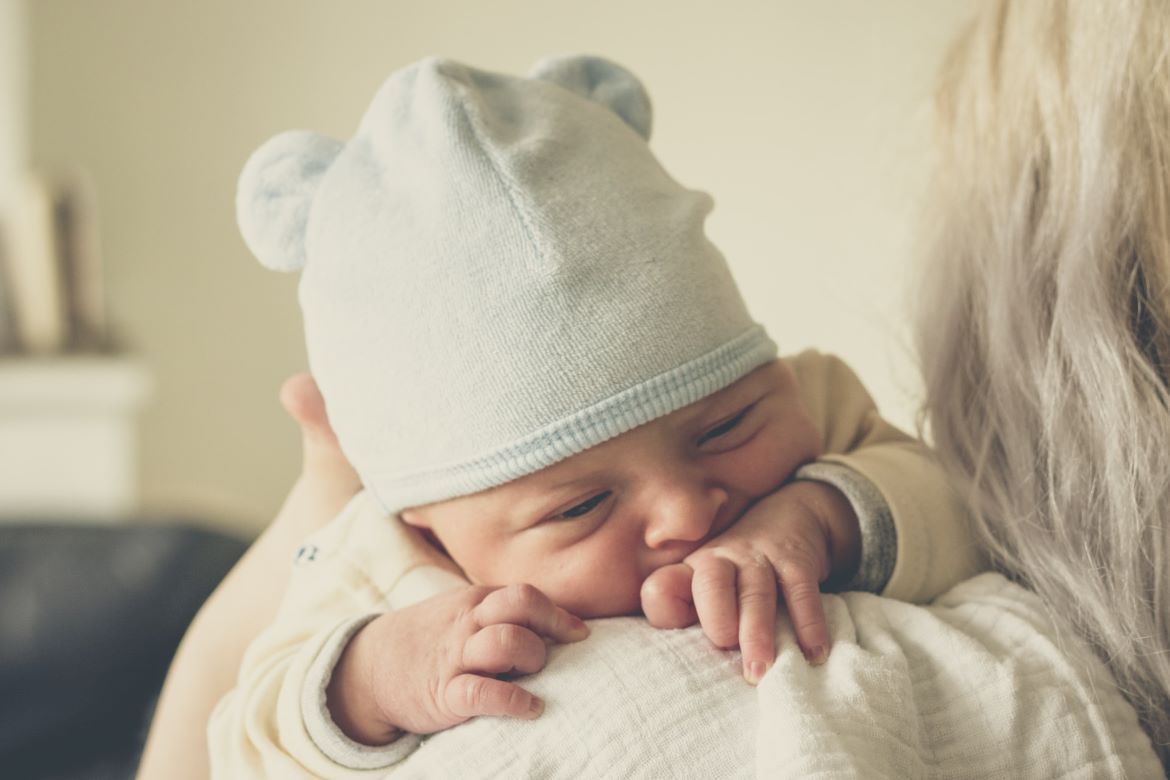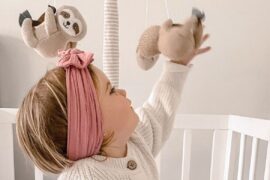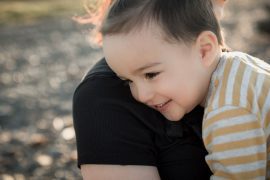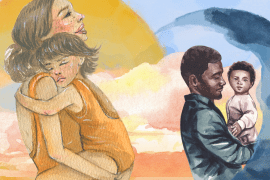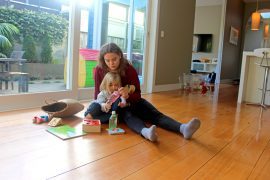By April Kinney
Caring for a newborn baby can bring about so many thoughts and feelings. At first, they are magical little beings that can do no wrong. But then sleep deprivation settles in and your mind struggles to manage even the smallest daily activity. It becomes easy to forget what day it is, or when you last slept, ate, or washed your hair. Mindfulness is probably the last thing on your mind. But it can help make those first few months easier and more fulfilling.
I gave birth to my daughter at 38 weeks and 4 days via planned caesarean section. I had a full night of sleep before we arrived at the hospital and I was feeling great! My daughter was born just after noon. After the birth, we were wheeled back to a room where we would spend the next 5 nights. My pain was managed by medication administered through my IV. My partner was by my side, playing soft music and leading a guided meditation. That set the stage for our mindfulness journey with our newborn daughter.
Thanks to COVID, we lived in a bubble. My partner was approved to stay with us at the hospital, but there were strict restrictions on his arrival and departure from the hospital. In addition, our daughter and I were not allowed to leave the room. The only rest I had was when she was sleeping, and even then, I was awakened for my regular exams.
Mindfulness is probably the last thing on your mind. But it can help make those first few months easier and more fulfilling.
I found myself methodically breathing four counts in and four counts out. I intended to relax and make sure I was getting enough oxygen into my tired and sore body. Four counts were as much as I could manage before I felt pressure around my staples. Inevitably my daughter would end up on my chest while I was doing my breathing exercises. Newborns are never awake or asleep for very long, but they almost always seek out the warmth of their mother’s body. I soon realised that she was responding to my breath. If she was crying, she would quieten down more quickly. If she was asleep, her breathing rate would slow slightly, so we could breathe together.
I would also hum, sometimes to a song or a random tune, or sometimes to the sound of Om. Feeling the vibrations in my own body was relaxing and nurturing. It reminded me of the calm feeling I have when I attend a yoga or meditation class. What I realised next was that my daughter could feel the vibrations from my humming as she cuddled up close to me. I started to notice that I could transfer my vibrations to her most effectively through my throat. So, I would gently rest my chin on the top of her head and repeatedly hum. Again, it seemed to help her relax and connect with me on a deeper level.
Another technique I have used to manage my stress and anxiety is tapping. Although traditional tapping did not seem appropriate for my tiny angel with her fragile body and my large fingers. So as my little angel rested on my chest, I slowly and rhythmically tapped her back, arm, or leg. Looking back, I think I did this unconsciously. I was tired and seeking comfort. While the pain medication helped alleviate the pain, it made me feel a bit disconnected from my true self. Somehow tapping her little body helped us both feel calm, peaceful, and grounded.
What I realised next was that my daughter could feel the vibrations from my humming as she cuddled up close to me.
I quickly learned the mindfulness techniques I used to manage my well-being also helped my daughter. She still cried when she was hungry, thirsty, or wanted my attention, but her cries were manageable. I was sore and tired, but I felt calm and peaceful. We were both able to handle the newness of life in a more positive way.
After 5 nights and 6 days in the hospital, I was sent home with pain medication and my perfect little angel. I continued mindfully breathing, humming, and tapping with my daughter.
Two and a half years later and I have added many more mindfulness techniques to our relaxation toolbox. They all work, sometimes at different times or places. The secret is not having any expectations. We are human after all, and sometimes our emotions bubble over, and even the simplest mindfulness technique gets overlooked and forgotten.

